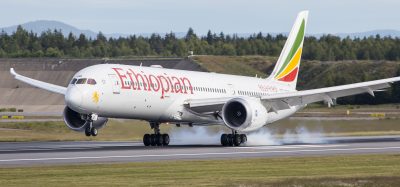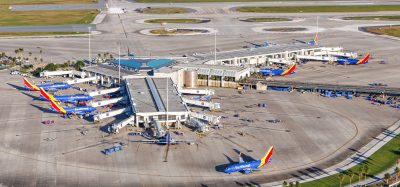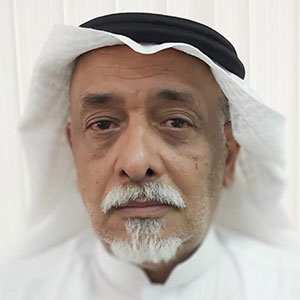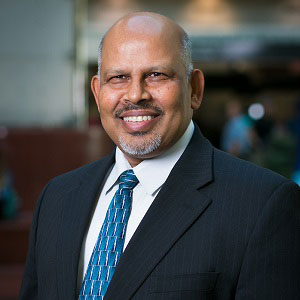Munich Airport outlines strategies for net zero, passenger experience and digital innovation
Posted: 28 November 2025 | Gabriel Higgins | No comments yet
In an exclusive interview with International Airport Review, Jost Lammers, President and Chief Executive Officer, and Dr Lutz Weisser, Managing Director, of Munich Airport, talk about targeting net zero by 2035, introducing AI and biometric solutions, and expanding terminals to enhance passenger journeys and improve operational efficiency.
Driving the net zero agenda
Munich International Airport (MUC) has set an ambitious target to achieve net zero carbon emissions by 2035, 15 years ahead of its previous goal of 2050. Jost Lammers, President and Chief Executive Officer, and Dr Lutz Weisser, Managing Director, discussed the airport’s strategies for sustainability, technological innovation and passenger experience in a recent interview.
By moving the target from 2050 to 2035, we are showing our staff, management and community that we take climate action seriously.”
According to Lammers, the airport’s climate-neutral transformation relies on three key pillars: electric mobility, renewable energy and sustainable buildings. He explained that almost 50% of the airport’s fleet now runs on electric power, with over 600 vehicles operating on the apron and in regular operations. To support this transition, Munich Airport has invested in a new power grid, costing €200 million, to ensure energy is delivered efficiently across the airport site.
“In Munich, we are very proud to bring this target forward,” said Lammers. “E-mobility is a no-brainer nowadays, and we are committed to converting the airport’s electricity supply to green energy. Our plan includes achieving 550 megawatts of electricity from renewable sources by 2030, covering around 25-30% of the airport’s total consumption.”
Free webinar – The future of asset management in global aviation
15 January, 2026, 02:00PM GMT
Join this virtual panel to hear from some of the AtkinsRéalis and aviation sector experts as we discuss how asset management is changing and the impact it will have on the future operations of airports throughout the world.
Lammers also highlighted the importance of sustainable infrastructure, stating that buildings are central to the airport’s green footprint. New terminals and facilities incorporate the latest state-of-the-art equipment, energy-efficient systems and environmentally friendly materials. He added that smaller initiatives, such as converting all apron lighting to LED, contribute to overall efficiency and sustainability.
The decision to bring the net zero target forward reflects the airport’s desire to act swiftly in response to climate change. “By moving the target from 2050 to 2035, we are showing our staff, management and community that we take climate action seriously. Shortening procurement and implementation processes allows us to achieve faster, more concrete results,” Lammers explained.
Munich Airport places a strong emphasis on working closely with local communities and stakeholders. Lammers noted that the airport maintains regular contact with its neighbouring communities, providing compensation for noise impacts and investing in social, cultural and sports initiatives. “We aim to be a very good neighbour and remain deeply involved in cooperation with our surrounding communities,” he said.
Terminal expansion and passenger growth
Airlines have tons of data about passengers. We have some information, but we need these datasets to talk to each other. If they did, we could create truly seamless journeys for travellers, optimising both efficiency and experience.”
The airport is also expanding its infrastructure, with a new pier at Terminal One scheduled to open later this year. Lammers explained that the pier will be dedicated to non-Star Alliance traffic, primarily international carriers from the United States, Middle East and Far East. The facility adds twelve narrow-body stands and six wide-body stands, effectively doubling Terminal One’s capacity for non-Star Alliance traffic and providing an additional six million passenger movements annually.
Optimising passenger journeys
Dr Weisser discussed the airport’s ongoing work to streamline passenger journeys and reduce bottlenecks across multiple checkpoints. He highlighted that despite online check-in and modern processes, passengers often face repeated verification procedures that slow travel. “There is still a very big stop-and-go process. People are stopped multiple times to prove their identity or baggage contents. Seamless travel is still far away, but we are working towards it through biometric integration and advanced technology,” said Weisser.
The airport is piloting facial recognition systems that allow passengers to use their face as an ID card, potentially eliminating the need for passports and other physical documentation. Weisser compared the process with the U.S. Global Entry system, noting that the aim is for passengers to move through airports in seconds rather than minutes.
He also stressed the importance of data integration between airlines, airports and transport providers. “Airlines have tons of data about passengers. We have some information, but we need these datasets to talk to each other. If they did, we could create truly seamless journeys for travellers, optimising both efficiency and experience,” Weisser said.
Optimising baggage management is another focus area for Munich Airport. Weisser explained that RFID technology, similar to that used by Qantas domestic services, allows baggage to be tracked accurately and ensures it arrives at the correct destination with minimal intervention. “The airport benefits when passengers have their baggage early. A passenger without bags is less likely to spend money, so efficient baggage handling directly impacts revenue and passenger satisfaction,” he added.
Artificial intelligence plays an increasingly important role at Munich Airport. Both Lammers and Weisser described AI projects aimed at predicting passenger behaviour, managing demand and improving operational efficiency. These include forecasting boarding patterns, predicting ground handling requirements and optimising taxiing times for aircraft. By analysing passenger demographics and purchase behaviour, the airport can tailor services and retail offerings to meet demand more accurately.
Balancing sustainability and passenger experience
The discussion highlighted how sustainability, digital innovation and passenger experience are intertwined. Lammers pointed out that the airport’s green energy initiatives, e-mobility investments and building designs not only reduce carbon emissions but also create a better environment for passengers and staff. AI-driven forecasting and biometric integration enhance efficiency, reduce queues and improve overall satisfaction.
Munich Airport’s management emphasised that achieving climate neutrality, optimising passenger journeys and harnessing AI are long-term projects requiring coordination across multiple stakeholders. Lammers and Weisser highlighted the importance of data sharing, community engagement and investment in sustainable infrastructure as key factors in future success. Their strategies demonstrate a holistic approach to running a modern airport that balances environmental responsibility with operational excellence and passenger satisfaction.
With new infrastructure, digital innovation and sustainability initiatives underway, Munich Airport is positioning itself as a leading example of a future-ready airport in Europe, capable of handling growth while reducing its environmental footprint.
About the interviewees


Credit: Munich Airport
Jost Lammers was born in Oldenburg in 1967, completed his training as a banker after graduating from high school in Osnabrück. After completing his military service in the German Air Force, he studied business administration and economics in Bayreuth, Witten-Herdecke and San Diego. The graduate economist began his professional career in 1994 at an automotive supplier. Two years later, he moved to HOCHTIEF AG. Here, he was particularly active in investment and portfolio management before moving to HOCHTIEF AirPort GmbH in 1998, where he took on various tasks at the associated airports in Düsseldorf and Athens. At the Greek capital’s airport, he was involved in the commissioning and opening of the new airport. In 2004, he became Managing Director of Flughafen Düsseldorf GroundHandling GmbH. The 52-year-old has been in charge of Budapest Liszt Ferenc Airport since 2008. In 2019, he was also elected President of Airports Council International (ACI) Europe, the European umbrella organisation of international commercial airports. Jost Lammers is married and has two sons.


Credit: Munich Airport
Dr Lutz Weisser is an accomplished professional in airport development and management, currently serving as Managing Director at Munich Airport International since October 2022. With a robust background, Lutz has held several leadership positions including Managing Director at amd.sigma from 2011 to 2022, Managing Partner at Airport Design Management GmbH from 2000 to 2011, and Board Member and Managing Director at S+P Planungsgruppe Prof. Sommer+Partner GmbH from 1994 to 2000. Lutz co-founded Architekten am Graben, where served as Principal from 1984 to 1999. Lutz Weisser holds a Ph.D. in Engineering from Technische Universität Wien and a Master of Engineering in Architecture from RWTH Aachen University.
Join our free webinar: Revolutionising India’s travel experience through the Digi Yatra biometric programme.
Air travel is booming, and airports worldwide need to move passengers faster and more efficiently. Join the Digi Yatra Foundation and IDEMIA to discover how this groundbreaking initiative has already enabled over 60 million seamless domestic journeys using biometric identity management.
Date: 16 Dec | Time: 09:00 GMT
rEGISTER NOW TO SECURE YOUR SPOT
Can’t attend live? No worries – register to receive the recording post-event.
Related topics
Air traffic control/management (ATC/ATM), Airport construction and design, Airside operations, Digital transformation, Emissions, Innovation, Passenger experience and seamless travel, Sustainability, Terminal operations, Workforce


















